Editor's Note: The following post comes from Abby Jeske, a Lilly employee in early phase oncology research. Abby shares the story of her grandfather's clinical trial experience and how he has inspired and encouraged her to get involved in clinical research.
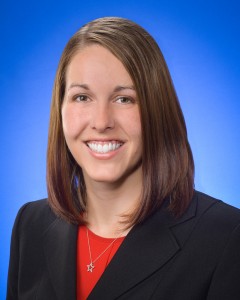
"Clinical Trials." It’s hard to believe how two small words have made such a large impact on my life and the lives of my family.
Sixteen years ago, in my small hometown in North Dakota, most people wouldn’t have been able to tell you what a clinical trial was. I definitely couldn’t. In fact, I could have hardly told you what cancer was, never mind what the different types were, or what they meant. That is until my grandfather, Jerry —Papa—, was diagnosed with Chronic Myelogenous Leukemia or CML. In all fairness, I was only fifteen, so it’s probably a blessing that up until that day in December 1999, I was mostly sheltered from the horrors of the C-word that no one wants to hear. I still remember the night my mom told me the news. It was a Sunday, I had purchased a new CD that afternoon at the mall and was just sitting down to listen to it when my dad knocked on my door. He said my mom needed to talk to us kids about something important. I instantly knew something was wrong when I walked into my parents’ room and saw my mom sitting on their bed crying.
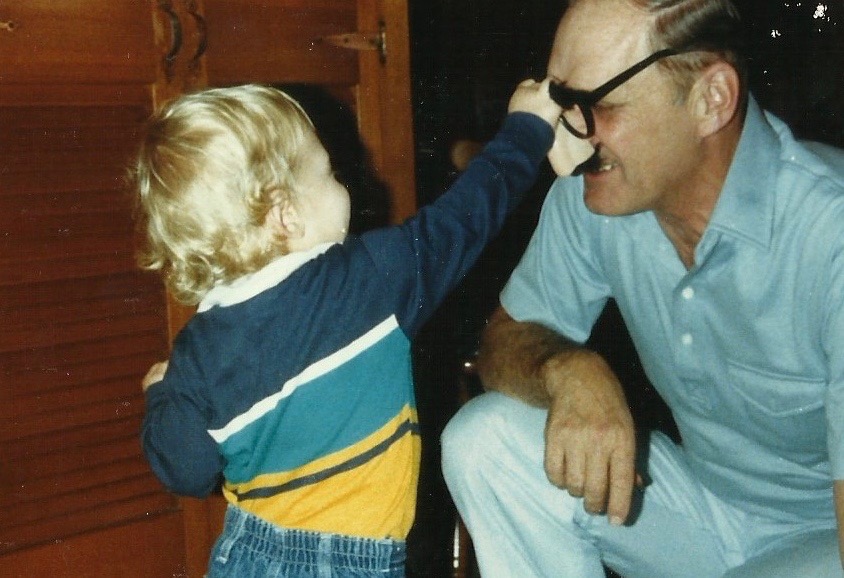
She told us the news that Papa had cancer and was traveling to the Roger Maris Cancer Center in Fargo the next day to begin treatment. My first response was that we needed to go pick up a carton of butter pecan ice cream —my grandpa’s favourite— and go over to their house. I was lucky enough to live in the same town as my grandparents and saw them every day during high school for lunch, so the fact that we could just go over and comfort them that night was something special. Talking with my grandparents, we learned that they had actually known about the diagnosis since the Friday before, but didn’t want to ruin everyone’s weekends, so they kept it to themselves.
The next few months were filled with weekly —and what sometimes felt like daily— visits to the local hospital for interferon infusions, labs, and blood transfusions. Papa didn’t respond well to interferon, which was the standard of care for CML at that time. Many days he didn’t have the energy to shower or get dressed. Often the only time he left his bed was to go to the clinic or sit with me when I visited at lunch. For him, the worst part was the bone pain he experienced, which led to multiple hospitalizations. For me, the worst part was the regular talks with my parents, who told us kids to make sure we spent as much time with Papa as possible since they didn’t know if he would make it through each week.
Finally in September of 2000, his oncologist in Fargo decided to refer him to the Mayo Clinic in Rochester, MN. His doctor felt that Papa was out of options and knew my grandfather needed a miracle. The fear was that Papa’s chronic leukemia would soon transition to an acute disease, which we were told would be a death sentence. Thankfully, the oncologist at Mayo Clinic knew about a clinical trial being conducted at four major cancer centers across the United States that was showing amazing results, and he was willing to work with my grandfather’s primary oncologist to get him referred. Papa was told to “pray that he had the right kind of cancer.”
About a month later, my grandfather received an acceptance letter from Oregon Health and Sciences University letting him know that he had been accepted into the clinical trial; however, there was a shortage of the experimental treatment, so we would need to wait until the medication was available. For us, this meant more interferon treatments, but it also gave us hope, and gave Papa something to keep fighting for. There was a light at the end of the tunnel; he just had to hold out a little longer.
Finally, about six months after he was initially accepted into the trial, we received notice that Papa would be able to start receiving treatment in the study on March 26, 2001.
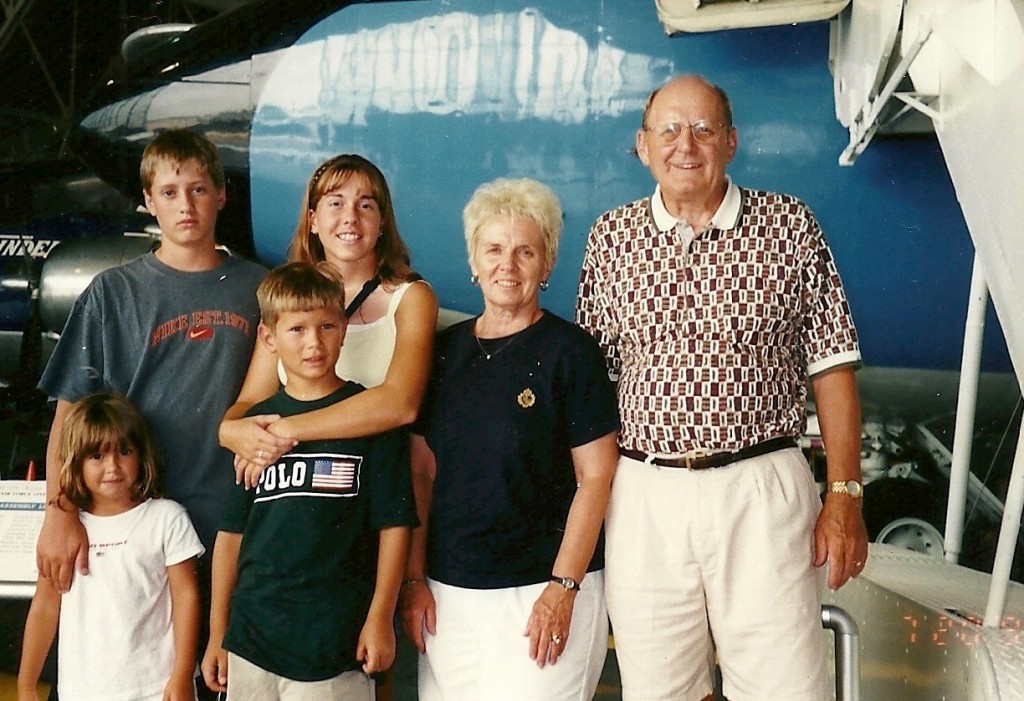
By that time, I had moved in with my grandparents and was finishing up my junior year of high school. It was amazing to watch the transformation that occurred within my grandfather once he started study treatment. Within 30 days his blood counts were back within normal limits and within a few months, he was his old self again and able to golf — a full 18-holes in one outing. During the early months of his sickness, we were always able to tell how Papa was feeling by the number of holes he was able to complete on the course and by whether he walked or used a cart. So, a return to a full round meant a return to “normal” for us.
Our clinical trial experience was a very positive one, but it wasn’t without its hiccups. One of those hiccups was at the delay in Papa’s start of the trial because of the shortage in ‘Investigational Product’. Another hiccup occurred when about three months after he began the study, the drug received a fast-track designation by the FDA and was approved. This was great news for all the patients needing access to this treatment, but it also meant that we needed to figure out how he would get access to the new, branded medication.
My grandfather will continue to take this medication for the rest of his life, even though the bio-marker is no longer detectable in his blood. That’s because about 10-15% of patients with CML who stop taking the medication experience a recurrence that doesn’t respond to therapy. But we were aware of these risks from the start, and we gladly took them for the opportunity to have my grandfather healthy again.
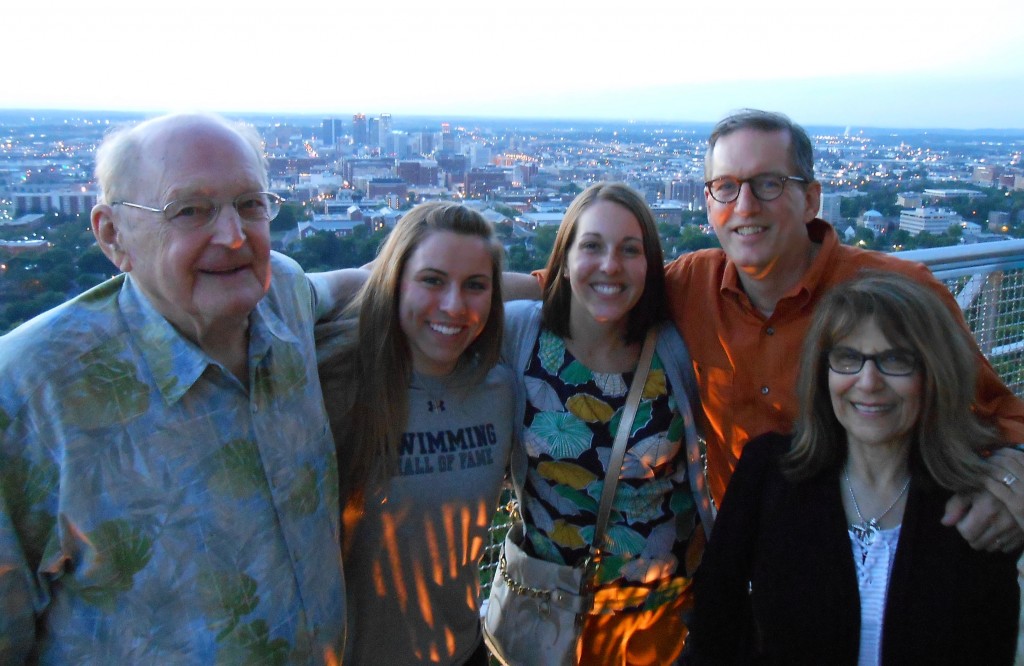
For my family, the clinical trial experience was transformational. It gave us the opportunity to experience hope after a lot of heartbreak. As a result of his experience Papa has become an active proponent for clinical trials and played a large role in encouraging me down the path that brought me to Lilly.
When I changed majors during my sophomore year of undergrad to pre-med with the intent of becoming an oncology researcher, Papa was one of the first people I told. And when I graduated undergrad and decided to take a year off, he was the one calling me almost weekly to tell me that a local Contract Research Organization (CRO) was hiring research coordinators and I should apply. When I made the decision to go to pharmacy school in the hopes of working at a pharmaceutical company and having a greater impact on the future of clinical trials, he helped me move to and from Alabama. And every Sunday night he still calls to ask about my week and how things are going at work. His constant encouragement and the thought of all the other little girls whose ‘Papas’ need a miracle are what drive me every day.
This past Saturday, March 26th, marked the fifteenth anniversary of my grandfather’s first clinical trial visit day. As I reflect back, it seems almost unfathomable the things that have happened since that day. For a pharmacist, especially one from North Dakota, my career is a non-traditional one, but it’s one that started as a result of two little words sixteen years ago, and I wouldn’t change a thing.
One Year Later…
My Hero’s Journey: A Story of Love, Loss and Art
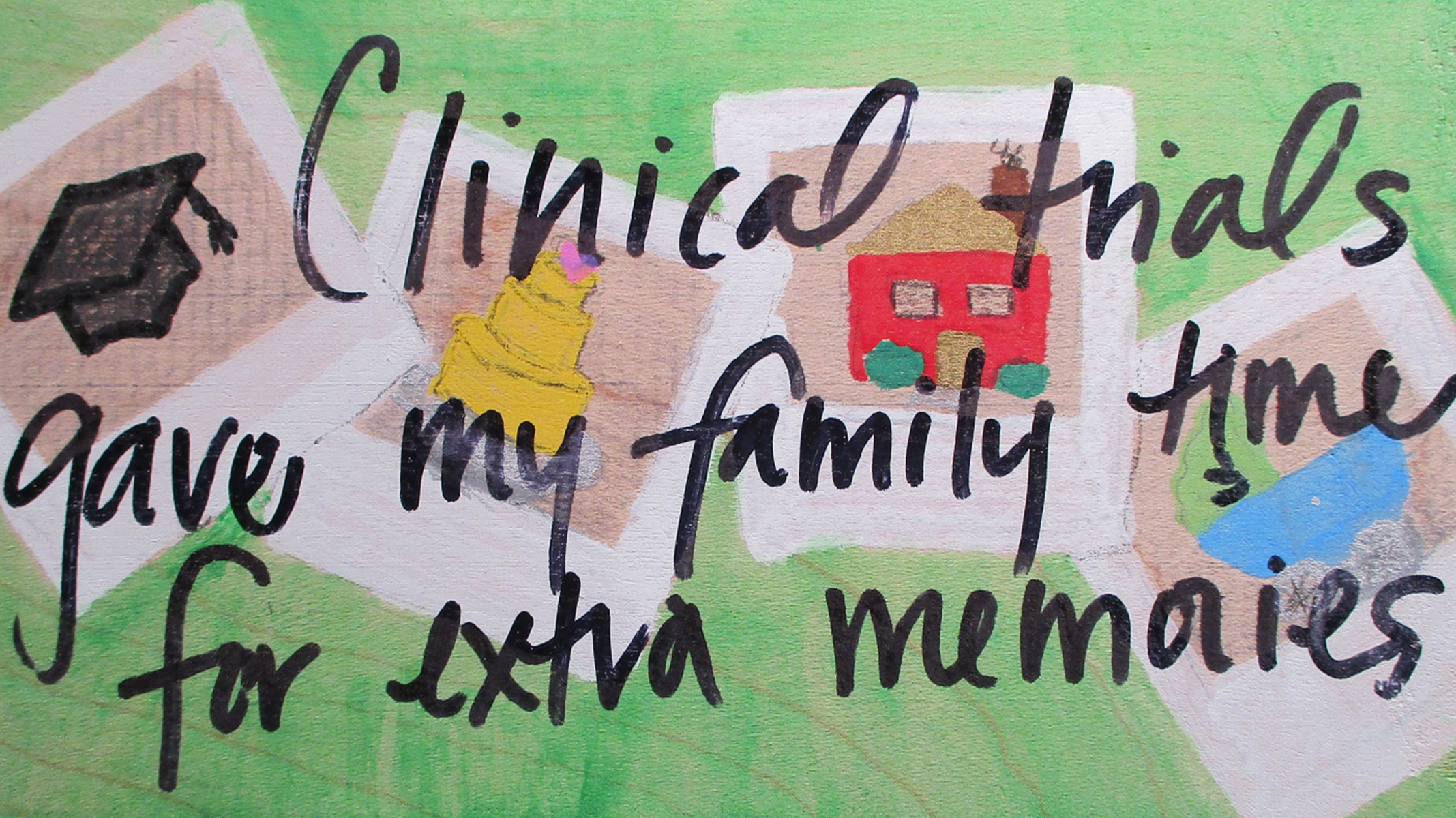
In Abby’s second blog post, she continues to share her personal story about the impact of clinical trials on her life. She tells us about how taking part in the Hero’s Journey™ Art project allowed her to honor her grandfather’s participation in a trial, but also make one last memory with him.
I had the opportunity to spend my lunch hour painting a brick for the Hero’s Journey™ Art project as a part of a team-building event with my Early Phase Oncology Indianapolis teammates. Hero’s Journey™ Art is a Lilly-sponsored initiative that honors the stories and experiences of all people affected by clinical trials — from patients, caregivers and families, to industry and health care professionals. My experience during the workshop was deeply personal for many reasons. The impact of that experience is what helped drive me to my chosen vocation and current role at Lilly.
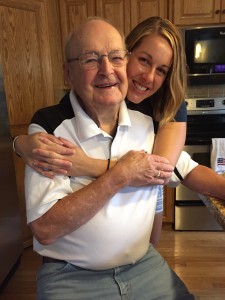
In September 2016, Papa suffered back-to-back infections that resulted in him acquiring clostridium difficile (C. diff). Since Papa had been on some sort of immunosuppressant agent for the past 17 years, this wasn’t the first time he had suffered from C. diff and so our family approached the diagnosis as we had every other health setback he had encountered, with an optimistic outlook that he would recover and a plan for his rehab and support. Unfortunately, on November 2, 2016, during a care-call with his doctors, the decision was made to discontinue further treatment for Papa’s infection. He was not responding to therapy and was beginning to develop additional complications.
Papa’s brick gave us an opportunity to share one more experience together. As I made plans for a potential final trip home in early November, the opportunity presented itself for Papa to paint a Hero’s Journey™ Art brick. As Papa and I talked through what message he wanted to convey with his brick, we found ourselves going down a path of reflection in which we were able to work through many of the emotions we were feeling about where his journey had led us. We reminisced about the fact that we had ultimately received 15 additional years of milestones celebrated, holidays together, pizzas enjoyed (Papa’s favourite food), golf tournaments, and most importantly, laughs. It was this realization that allowed us the closure to gracefully accept the inevitable and enjoy the time we had left. Papa’s brick gave us an opportunity to share one more experience together.

Sadly, my hero completed his journey on December 9, 2016 — seventeen years to the day from when he was diagnosed with leukemia. I would be lying if I said that the thought of painting a brick of my own during my team workshop wasn’t a bit overwhelming and even intimidating for me, but it also offered another step in the healing process. Creating my own brick allowed me the chance to show the world what clinical trials have given me and what I hope they will continue to give to other families: time. Many people I have talked to about Hero’s Journey™ Art say they haven’t decorated their brick yet because they can’t think of what they want to say or show. They worry that their message won’t be impactful. My advice to them is to follow their heart and paint the first thing that comes to mind, and to embrace the opportunity that’s been offered to honor clinical trial participants around the world.
Whether you are completing a brick or just following the progress of this project, it is likely you know someone who’s been affected by clinical trials. Clinical trial heroes are all around us, whether it’s the patient that just achieved a response in a trial you’re managing, your friend or family member who uses an approved medication (thanks to clinical trials), or your co-worker’s loved one who has lived the clinical trial experience. Honor them and their stories by participating in the online conversation through #HerosJourneyArt
The mark Hero’s Journey(TM) is used under license from the Joseph Campbell Foundation.
Rediscovering My Purpose
Editor’s Note: In 2018, as part of the One Person Closer campaign organized by TransCelerate BioPharma, Inc, Abby was given the opportunity to meet her grandfather’s research physician, Dr. Brian Druker.
Through TranCelerate's One Person Closer campaign, a cross-industry collaboration project in which I participate, I had the chance to travel to Oregon Health and Sciences University (OHSU) to meet my grandfather, Papa’s, research physician. I have previously shared Papa’s clinical trial story and the role the staff of OHSU played in his experience. So, the idea of meeting the man who was the inspiration behind me deciding to devote my life to clinical research was both an intimidating and exciting prospect. I would be lying if I said the decision to go was an easy one. I had to take some time to think about the opportunity before accepting. After losing Papa in December 2016, I spent most of 2017 working through the healing process and didn’t know if emotionally I would be up to the task of walking onto OHSU’s campus. However, I felt deep down that this opportunity was presenting itself now for a reason, and that it was an experience I couldn’t pass up.
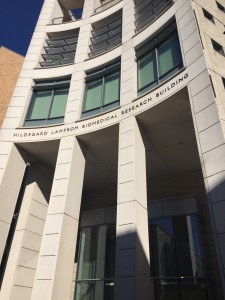
The morning of our meeting I woke up early, took a short run to calm my nerves, and headed over to campus to meet our videography crew for set up. Going into the day’s activities I knew that we would be interviewing Papa’s physician, along with two clinical trial patients. What I hadn’t realized was that we would be interviewing two of the people who participated in the First-in-Human study for the drug. In fact, these people were participants in the dose-escalation part of the trial, meaning that until an efficacious dose was established, they were not even receiving the recommended dosage of the medication. Amazingly, more than eighteen years later, they were there to share their stories.
Right on time, at noon, our first interviewee arrived in the room. As I listened to the story of ‘Patient #9’, there were many times I was astounded by what I was hearing. I slowly learned that the people in this trial were incredibly resourceful and well educated about clinical research. Almost twenty years ago, Patient #9 was researching what clinical trials were available for chronic myelogenous leukemia (CML), calling research sites to determine when the next cohort would open and finding out whether she qualified. All of this before the creation of clinicaltrials.gov! I was reminded of the days after we learned that a clinical trial was Papa’s only hope, when he would spend time on his computer Googling anything and everything so he could learn about his potential options. From Patient #9, I also had the chance to hear about how these initial patients created their own “support group,” because they felt so guilty talking about how good they felt in front of other patients who weren’t having the same response. So every month, their physician would bring his lunch and join the group to talk about whatever questions they may have: why they couldn’t eat certain things while taking their medication, why certain lab values were important in managing their care, etc.
After spending time with Patient #9, I thought I knew what to expect going into our next interview, but nothing could prepare me for when Patient #13, Papa’s doppelganger, walked into the room. He and my grandfather were the same age, had the same goofy grin and could tell the story of their journey with no additional prompting. Both viewed their story in such a positive light that they were able to downplay any negative experiences during the trial, because of what it bought them in the end. The moment that affected me the most though, came when Patient #13 told us the best part of his clinical trial experience, which was all of the things he had been able to watch his children and grandchildren accomplish. He had not dreamed any of these experiences possible eighteen years ago. This was always Papa’s answer, too. It was like he was there in the room with us and if I just closed my eyes, I could imagine it was him speaking.
Patient #13 told us the best part of his clinical trial experience, which was all of the things he had been able to watch his children and grandchildren accomplish
Finally, it was time for the main event, and precisely on schedule the elevator doors opened and out walked the man of the hour. Although I had never met Dr. Brian Druker before, he looked exactly as I had envisioned him from Papa’s stories. He immediately greeted his patients and entered into conversation with them, catching up on their families and lives outside of leukemia. As we moved the discussion into the interview room for a few pictures, they proceeded to chat about what other patients were up to, and their memories from when the trial first started. Once the room cleared, I was asked to share my story with Dr. Druker. I’m sure he has heard a similar version of this story hundreds of times, yet he remained completely engaged in everything I had to say, as if there was no one else in the room and he had nothing better he could be doing with his time.

Next, it was his turn to tell his story. Throughout Dr. Druker’s interview, I was amazed by the various hats he wore as a storyteller. While telling us about his childhood and early love of math and science it was like we were listening to a giddy schoolboy. When he talked about the first trials and ultimate approval of the study drug, I had a chance to see the seasoned podium presenter who knew the answers to all possible questions inside and out.
At the end of the interview, I was given the opportunity to ask him a few questions. The first was, “What was your greatest hope when you began the trials for this particular drug?” He said his first hope was that the drug wouldn’t prove fatal for any of the patients. Secondly, he said that he hoped, like many oncology researchers do, that he would cure cancer. However, what he hadn’t planned for or even considered as a possibility, is that he would help create a drug that would prove to be a chronic medication that could return patients to their baseline pre-diagnosis quality of life, and that many would still be taking it daily almost twenty years later. Next, I asked him, “Why do you do research?” It was during this response he became a fiery advocate for clinical research as he talked about how we have to do better for our patients and shared stories of his own family members’ battles with cancer.
While listening to Dr. Druker, I felt myself light up inside. I have often been told by others, after sharing my and Papa’s story, that my passion is contagious and our story inspiring. Listening to Dr. Druker that afternoon I experienced what someone else’s contagious passion felt like. It wasn’t until I was sitting on the flight home that evening that I was able to understand why his response had moved me so. Ever since Papa passed away I have struggled. There have been days that I have struggled to come to work since even the littlest things there can make me think of him and reduce me to tears. For many people, work can be an escape from things happening in one’s personal life, but for me, because of Papa, my personal and professional lives are intimately linked.
I have also struggled to think about my career development. I have always been an incredibly driven professional, but my work goals were always “our” goals, so when I would attempt to envision my next step(s), the future looked blank. I could feel myself becoming complacent. It was like the fire that once burned inside me, for all the papas and granddaughters out there who needed more time, had reduced itself to an ember. Listening to Dr. Druker that day I felt the flame ignite anew and I could truly remember the purpose of the journey I am on and the promise Papa and I had made to each other. This was that if people needed to put a face to clinical research, it was our duty to be that face for them if they didn’t have anyone else. For those of you who may be interested in seeing more of the beautiful faces of the scientists, healthcare professionals and patients who have participated in clinical research, join or follow the #OnePersonCloser campaign on Twitter and Facebook, and feel free to share these stories.
I know that I still have a way to go as I rediscover the things I want to accomplish during my career in clinical research. It seems fitting that after the physical healing he had once offered my Papa, Dr. Druker has now helped me start on the path to emotional healing by reigniting in me a fire that I need to be mindful to never let extinguish.

